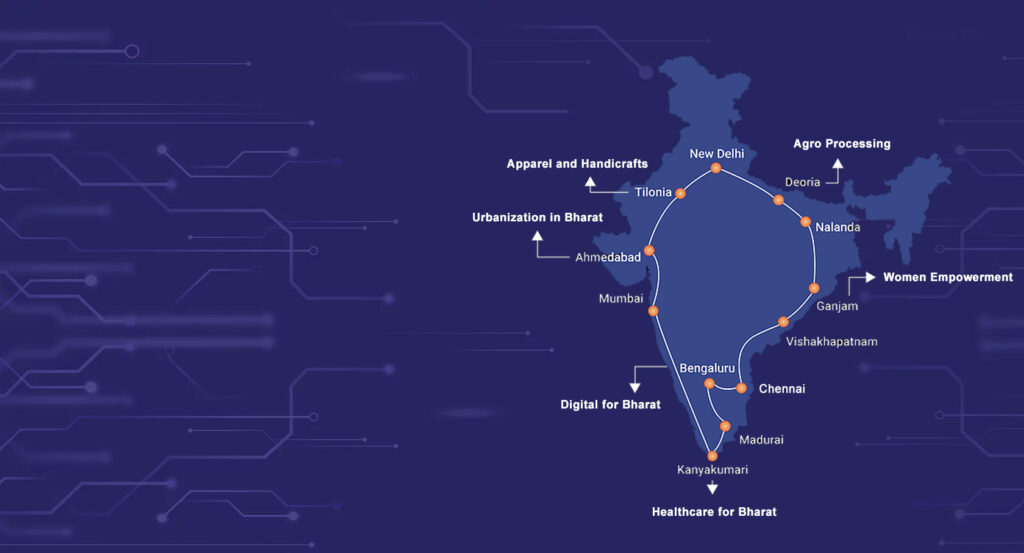
Winning with a SaaS Business Built in India for the World
Winning with a SaaS Business
What’s the formula for Winning with a SaaS Business? Is there a formula for Winning with a Business Built in India for the World? Indian IT companies seem to have discovered a path to a certain extent. However, IT businesses themselves are going thru significant competitive pressures. IT services, predominantly driven by Hourly $ rate dynamics have seen significant competition. Competition mounted by automation tools or economic policies that frown on remote work.
Indian entrepreneurs have learnt new tricks and new models. An outgrowth of this is SaaS – Software as a Service. A best of Both Worlds Model. This makes Winning with a SaaS Business Built in India for the World a key topic. SaaS Businesses earn revenues in $ or Euros but have expenses in Indian Rupee.
Further, they don’t have the dependency on $ per hour pressures. This means they have a product and their revenues are non-linear. But how does one do it? What’s the formula? Before we get into that, let’s understand a little history of India’s GDP.
The History of India’s GDP – India had businesses that won the World
India was once the World’s Pre-eminent Global Economy with a significant share of the World’s GDP. Until the imperial era dawned on us. We made things that were the envy of the World. So much so that it made European powers go to great lengths to find trade routes to trade with India.

However, things have changed drastically with India importing much of what it needs. A cursory look at Indian imports versus exports shows that India is slowly clawing its way back that ladder. A couple of decades ago, India mostly imported finished products. Today, its a mix of raw materials and finished goods putting India in the category of value adding countries.

India’s SaaS Story- The future is bright
The stress of IT lifestyles of Indian IT Service businesses is giving way to SaaS. Entrepreneurs no longer want to work graveyard shifts or service overseas clients for $ Rupee arbitrage. They want to be in control of their destiny. They want to build products for the World but leading normal lives out of India. SaaS seems to be the perfect model for that.

India today is home to more than a 1000 SaaS Companies. While a few names dominate the headlines, a visit to SaaS Boomi in Chennai is telling. The annual signature SaaS event feels like the late 90s moment for SaaS is soon going to be upon us. It is in light of this that Vivek Khandelwal’s iZooto Story makes for interesting listening. Winning with a SaaS Business Built in India for the World is not just fantasy. Its as real as it can get.
A Train Journey and Vivek brush with entrepreneurship
While still in College, Vivek Khandelwal embarked on a journey of discovery with Jagriti. Jagriti is a train journey unlike any other. It takes young minds to see the best of entrepreneurship and innovation across India. This inspired him to become a creator and an entrepreneur. He shares how he and his co-founders have built a multi-million $ SAAS business working with businesses across the Globe.

Here are some excerpts from the Episode
How Vivek Became a Entrepreneur
I ended up being an entrepreneur because I was part of this strange journey back in college called as Jagritiyatra in 2008 December. And that’s when I met a bunch of enterprising people. I met a lot of entrepreneurs, people who are building stuff people who are doing really, really cool things. And that journey was a great tipping point for me personally
Vivek Khandelwal 03:38
He took us for a tour of the kitchen he showed here is what scale actually means. Scale is not serving lunch to 500 people in a hostel, right? Scale is serving meals, hygiene, nutritious, warm meals to half a million kids in a city. That’s what scales mean scale means. And that idea completely changed my perspective of how to look at things
Vivek Khandelwal 07:30
And it was mind boggling because they were spending, like a couple of million dollars every single month, just to Drive app installs. And I could not believe this was like, if the end user is uninstalling their app in less than eight hours, why? Why are they spending so much money?
Vivek Khandelwal 16:44
Vivek On a Cardinal Mistake He Made!
So in 2009 we made the cardinal mistake of building the product first, and then figuring out our distribution or our sales, sales method.
Vivek Khandelwal 30:27
Remember when the Indian government recently banned Tik Tok? What also happened in this process was that there were hundreds and thousands of Tik Tok influencers that were suddenly stripped of the access to that audience.
Vivek Khandelwal 34:55
Vivek says Serving Customers is the Goal!
By the time it was 2018, we were already profitable, we had some money in the bank. But we also knew back in fact, then that doing this with two or three different segments of customers will be a suicide mission. So we said, we will gradually shift the focus to this new segment of media publishers. We will double down our efforts in terms of production and marketing and sales to serve these customers more efficiently.
Vivek Khandelwal 1:02:34
Show Notes
Follow Vivek Khandelwal
Vivek Khandelwal – Founder – iZooto | LinkedIn
Vivek Khandelwal (@vivekk) | Twitter
Here’s what the World Cloud for this episode looks like

